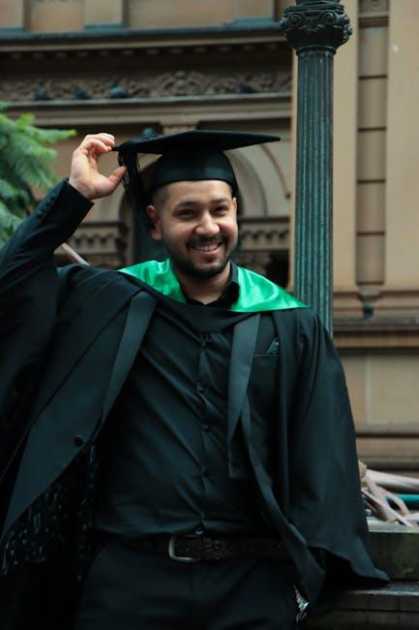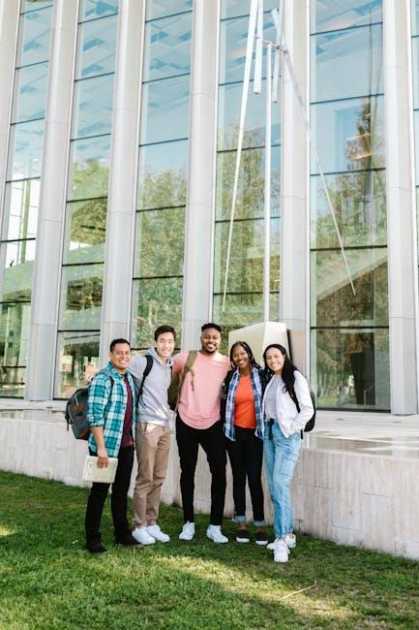Embarking on an educational journey in Australia is not just an opportunity to learn from some of the world’s top institutions; it’s also a chance to immerse yourself in a vibrant culture and breathtaking landscapes. As the land Down Under continues to attract students from across the globe, navigating the visa process can feel daunting, especially for first-timers. In 2025,understanding the latest requirements and procedural nuances is crucial to ensuring a smooth transition into your new academic life. This complete guide will walk you through each step of acquiring an Australian student visa, spotlighting essential documentation, timelines, and tips for success. Whether you dream of exploring the Great Barrier Reef or studying in the heart of Melbourne, understanding the intricacies of the visa application process is your first step toward an unforgettable adventure in Australia.
Understanding visa Categories and Eligibility Criteria for Australia
When considering studying in Australia, it’s essential to understand the various visa categories and their prerequisites. The most popular option for international students is the subclass 500 student visa, which allows individuals to enroll in a full-time course at an accredited institution. to be eligible for this visa, applicants must provide proof of a valid Confirmation of Enrolment (CoE) from a registered education provider, demonstrate proficiency in English, and be financially capable of supporting themselves during their stay. additionally, meeting health and character requirements is mandatory, including obtaining a health insurance policy that covers the duration of their studies.
Along with the subclass 500, various other visa types might potentially be applicable depending on specific needs and circumstances. Some relevant categories include:
- Subclass 590: Student Guardian Visa – For guardians of international students.
- Subclass 485: Temporary Graduate Visa – For students who have recently graduated, allowing them to stay and work in Australia.
- Subclass 482: Temporary Skill Shortage Visa – For skilled workers nominated by an employer.
it’s crucial for potential applicants to assess their circumstances thoroughly and ensure they select the correct visa category,as each has its own set of documentation and eligibility criteria that must be fulfilled.
Navigating the Application Process: Essential Steps and Tips
Applying for a student visa in Australia can be a daunting but manageable task if you follow the right steps. Begin by familiarizing yourself with the subclass 500 visa,which is specifically designed for students enrolled in full-time courses. Before you start your application, ensure you have a Confirmation of Enrollment (CoE) from an eligible Australian education provider. This document not only validates your acceptance but also provides details about your course, which is critical for your visa application.Additionally, gathering necessary documents like your passport, financial statements, and health insurance can streamline the process considerably.
Next, it’s crucial to understand the financial requirements and English language proficiency needed for the visa application. make sure you prove that you have sufficient funds to cover tuition fees, living expenses, and travel costs. A well-organized financial plan not only satisfies visa requirements but also helps you prepare for your stay in Australia. Furthermore, applicants may need to provide evidence of English language skills through standardized testing or other accepted means. To keep track of your progress, consider creating a checklist that includes all required documents and steps in the application process:
| Step | Action |
|---|---|
| 1 | Obtain Confirmation of Enrollment (CoE) |
| 2 | Gather necessary documents |
| 3 | Prepare financial statements |
| 4 | Submit visa application online |
| 5 | Pay visa fee and complete health check |
Documentation Essentials: What You Need for a successful Visa Application
When applying for an Australian student visa, compiling the right documentation is crucial for ensuring a smooth application process. Below are the key documents you need to include:
- Confirmation of Enrollment (CoE): This document confirms your acceptance into a registered course in Australia.
- Proof of Identity: Valid passport bio-data page and any other identification requirements.
- Financial Evidence: Documents demonstrating that you have sufficient funds to cover tuition and living expenses.
- english Proficiency Test Results: Include results from tests like IELTS, TOEFL, or any other recognized exams.
- Health Insurance: Proof of Overseas Student Health Cover (OSHC) for the duration of your stay.
It’s advisable to organize these documents in a clear and logical manner before submission, as this can considerably affect processing times. Additionally, maintaining a checklist for each document will help avoid any last-minute scrambles. Below is a simplified table to help you track your documents:
| Document | Status |
|---|---|
| Confirmation of Enrollment | ✔️ |
| Proof of Identity | ✔️ |
| Financial evidence | ✔️ |
| English Proficiency Results | ✔️ |
| Health Insurance | ✔️ |
Post-Visa Considerations: Staying Compliant While Studying in Australia
Once your student visa is granted,the next step is to ensure that you remain compliant with its conditions.Compliance is vital not only for your academic journey but also for your future prospects in Australia. To maintain your visa status, you must adhere to the following essential requirements:
- Course Enrollment: Ensure you’re enrolled in a registered course and attend your classes regularly.
- Maintain Satisfactory Course Progress: Keep up with your studies and achieve the required academic performance.
- Work Limitations: Adhere to the allowed number of work hours stipulated by your visa conditions, typically up to 40 hours per fortnight during the semester.
- notify Changes: Inform your educational institution and the Department of Home Affairs of any changes to your personal circumstances,such as a change of address or course.
- Health Insurance: Maintain a valid Overseas Student Health Cover (OSHC) for the duration of your stay.
Understanding the implications of your visa conditions will dictate your experience in the country. Being proactive in managing your responsibilities can pave the way for a stress-free experience.Additionally, familiarize yourself with visa expiration dates and any potential pathways to extend your stay, whether for further education or postgraduate work opportunities. Consult with your institution’s student services for guidance on the following:
| Key Consideration | Description |
|---|---|
| Visa Expiration | Keep track of your visa’s expiration date and starting preparations for renewal or transition. |
| Post-Study Work Rights | Explore options such as the Temporary Graduate visa (subclass 485) for working in Australia post-study. |
| Community Engagement | Participate in local events and engage with the community to enhance your experience and support network. |
Q&A
Q&A: Australia Student Visa Guide 2025
Q: What is the purpose of the Australia Student Visa?
A: The Australia Student Visa allows international students to study full-time in various educational institutions across the country. It provides the opportunity to explore Australia’s rich culture while obtaining quality education in a world-renowned academic environment.
Q: What are the basic eligibility requirements for the Australia Student Visa in 2025?
A: To qualify, you must be enrolled in a registered course, be at least 6 years old (the age may vary for certain courses), have adequate financial resources to support your stay, meet health insurance requirements, and demonstrate proficiency in English, generally through tests like IELTS or TOEFL.
Q: How do I apply for the student visa? What’s the process?
A: The application process is straightforward. First, secure admission to an Australian educational institution. next, gather the required documents, including your confirmation of Enrollment (CoE) certificate, proof of funds, and health insurance details. Apply online via the Australian Government’s Department of home Affairs website by completing the required forms and paying the visa fees. Be prepared for additional documents depending on your circumstances.
Q: What documents do I need to prepare for my application?
A: Specifically, you will need:
- A valid passport
- Confirmation of Enrollment (CoE)
- Evidence of sufficient funds to cover tuition, living expenses, and travel
- Health insurance documentation (Overseas Student Health cover – OSHC)
- English language proficiency test results
- A statement of purpose outlining your study plans and future goals
Q: Is there an age limit for applying for a student visa?
A: There is no strict upper age limit for applying for a student visa, but applicants must be at least 6 years old. Students aged under 18 must provide additional documentation, such as proof of guardianship or welfare arrangements.
Q: How long does the visa processing typically take?
A: Processing times can vary based on the individual circumstances of applicants and the Australian embassy or consulate where you apply.Generally, it may take anywhere from a few weeks to a couple of months, so it’s advised to apply well in advance of your planned travel dates.
Q: Do I need to undergo a medical examination for the student visa?
A: yes, certain applicants may need to undergo a medical examination to ensure they meet health standards set by the Australian government. The requirement often depends on the length of your stay and your country of origin.
Q: Can I work while on a student visa?
A: Yes, student visa holders are allowed to work under specific conditions. As of 2025, you can work up to 40 hours per fortnight during the semester and unlimited hours during scheduled breaks. Always check for the latest regulations,as policies may change.
Q: What happens if my visa application is denied?
A: If your visa application is denied, you will receive a notification outlining the reasons for the refusal. you may have the option to appeal the decision or address the issues raised and reapply, ensuring that you meet all requirements this time around.
Q: what shoudl I do if I want to extend my stay in australia after my studies?
A: If you wish to stay beyond your student visa, you can explore options such as applying for a graduate visa, which allows you to remain in Australia for post-study work. Ensure you meet the criteria for whatever visa group you apply for and plan accordingly!
Q: Where can I find more data and assistance regarding the Australia student Visa?
A: For comprehensive information, the best resource is the Australian Government’s Department of Home Affairs website. additionally, seeking advice from education agents can provide tailored guidance specific to your circumstances.
This guide aims to illuminate the frequently enough daunting process of obtaining an Australia Student Visa in 2025, equipping you with the knowledge needed to embark on your academic adventure down under!
The Way Forward
As we wrap up this comprehensive guide on navigating the Australian student visa process for 2025, it’s clear that embarking on an educational journey Down Under is an exciting prospect filled with possibilities. From the vibrant cities and stunning landscapes to the world-class institutions that call Australia home, your academic adventure awaits.
Armed with the step-by-step insights and requirements outlined in this article, you are now better equipped to take the next stride towards fulfilling your ambitions. Remember, every application is a unique story, and the details matter. Take your time, ensure that you meet all necessary criteria, and don’t hesitate to seek assistance if needed.
As you prepare for this transformative chapter in your life, keep the spirit of curiosity and openness alive. Australia is not just a destination; it’s an opportunity to immerse yourself in diverse cultures, form lasting connections, and expand your horizons.
We wish you the best of luck on your journey! Hear’s to your future and all the adventures that await in Australia. Safe travels and happy studying!


















